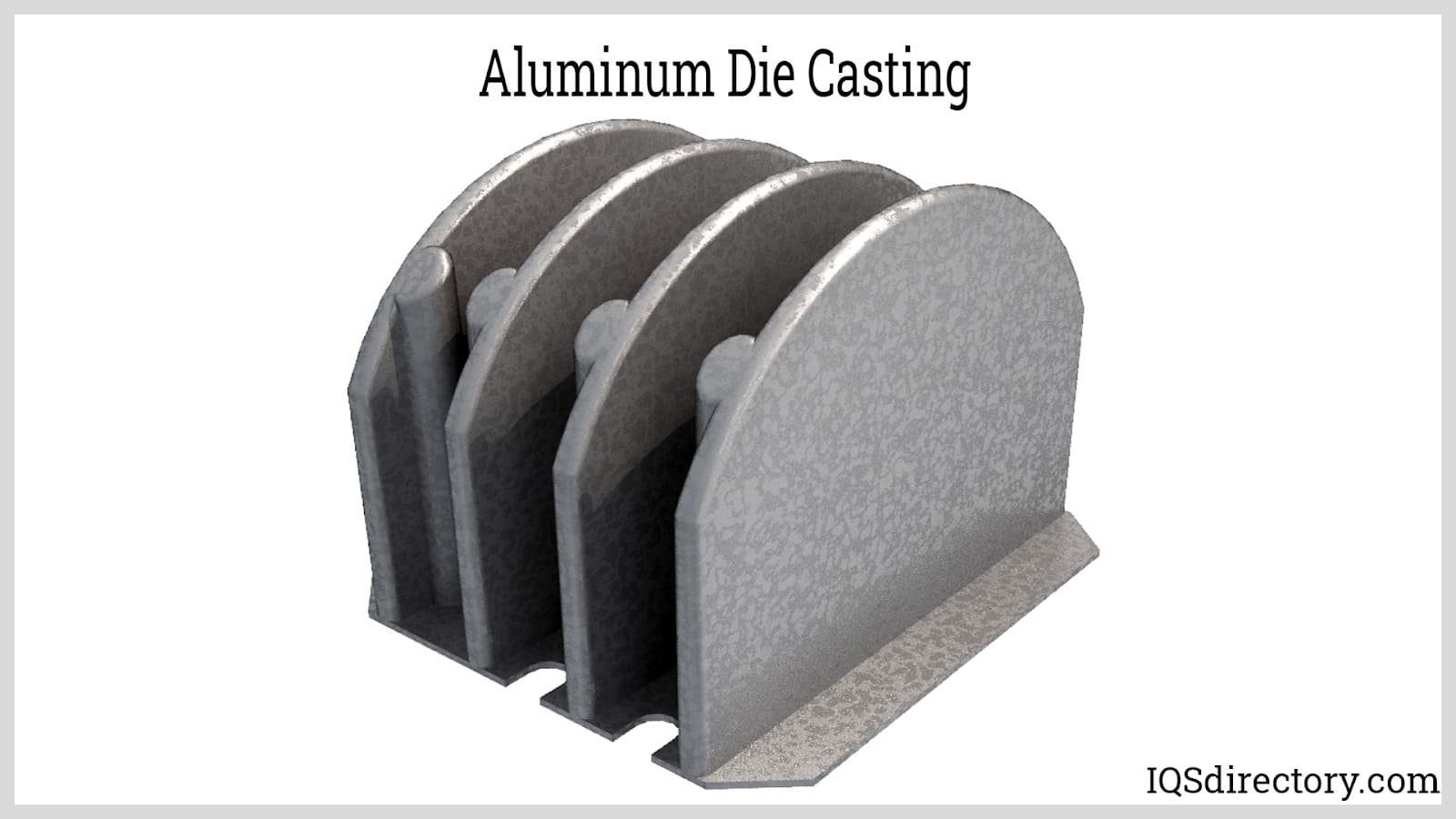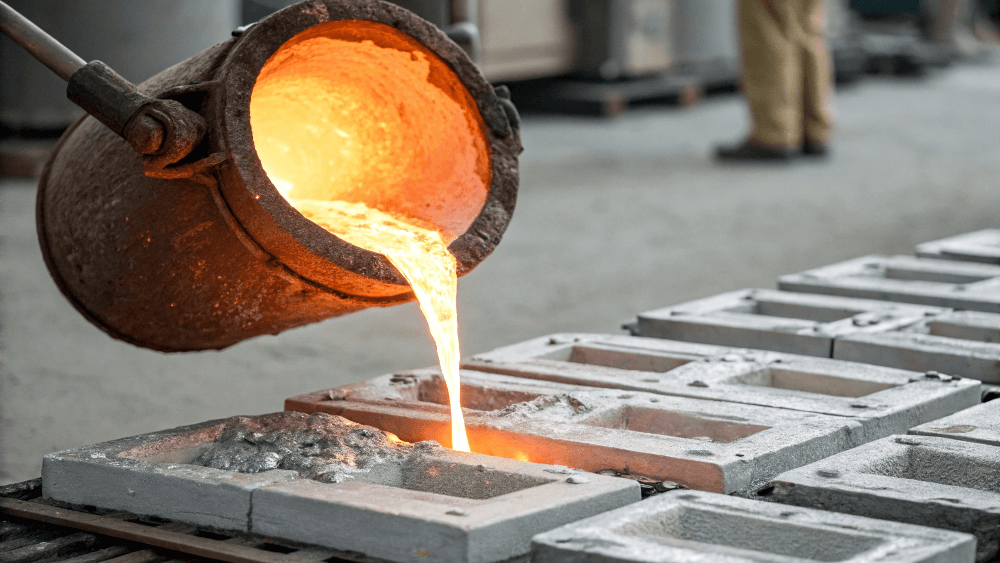Aluminum Foundry Wisconsin drives long-term casting practices
Wiki Article
How Aluminum Foundry Adds To Advancements in Aerospace Engineering
Aluminum foundries are important to developments in aerospace engineering. They generate lightweight, high-strength elements that are necessary for modern airplane. Via innovative casting techniques, these foundries create complex geometries that improve structural honesty. Furthermore, the growth of remarkable Aluminum alloys sustains the sector's concentrate on fuel effectiveness and sustainability. Challenges continue to be in the production process. Recognizing these elements reveals the extensive impact of Aluminum on air travel's future.The Value of Lightweight Products in Aerospace Design
As the aerospace market remains to develop, the value of light-weight products becomes progressively obvious. The need for efficiency and sustainability drives engineers to focus on using materials that minimize overall weight without jeopardizing structural integrity. Lightweight materials, particularly Aluminum, play a necessary duty in improving fuel effectiveness, boosting payload capability, and enhancing the total efficiency of aircraft.Furthermore, the combination of these materials permits cutting-edge styles, making it possible for makers to produce more aerodynamic forms that can stand up to severe conditions. The decrease in weight not just reduces operational prices yet additionally adds to a lowered ecological impact, aligning with international initiatives towards sustainability in aviation.
Advanced Spreading Techniques in Aluminum Foundries
Advanced spreading strategies in Aluminum factories play a vital function in aerospace design by enabling the manufacturing of precise and light-weight components. Technologies in mold and mildew style and precision casting processes are essential in accomplishing ideal efficiency and structural integrity. Furthermore, the growth of light-weight alloys improves the general effectiveness and performance of aerospace applications.Ingenious Mold Layout
Cutting-edge mold and mildew layout plays an important function in the performance and effectiveness of Aluminum factories, specifically within the aerospace sector. By leveraging advanced products and techniques, contemporary mold and mildews can be crafted to hold up against heats and pressures, guaranteeing peak performance throughout the casting process. These styles usually incorporate complex geometries that enable for the manufacturing of lightweight yet structurally audio parts, vital for aerospace applications. In addition, making use of computer-aided design (CAD) software program promotes exact modeling, making it possible for foundries to refine and imitate mold and mildew designs before physical manufacturing starts. This not just boosts the top quality of actors parts yet also decreases waste and lead times, causing considerable price financial savings. Overall, innovative mold and mildew layout is a foundation of progression in Aluminum Foundry modern technology for aerospace engineering.Accuracy Casting Procedures
The effectiveness of cutting-edge mold and mildew designs perfectly incorporates with precision spreading processes, which are crucial for creating top notch Aluminum components in aerospace engineering. These procedures, including sand casting, die spreading, and financial investment spreading, ensure the development of complex geometries with limited tolerances. Advanced methods like vacuum casting and pressure pass away casting enhance the integrity and surface finish of the end products. Precision spreading decreases product waste while making the most of the mechanical residential properties of Aluminum, critical for aerospace applications. Furthermore, employing real-time surveillance and progressed simulation devices throughout the casting procedure allows for instant modifications, causing boosted quality assurance. Jointly, these accuracy casting procedures placement Aluminum foundries at the leading edge of aerospace technology, supporting the market's need for integrity and performance.Light-weight Alloy Advancement
As aerospace designers seek to enhance gas performance and efficiency, lightweight alloy growth comes to be a vital focus in Aluminum shops. These foundries use advanced spreading techniques to create alloys that provide exceptional strength-to-weight ratios. Innovations in alloy composition, consisting of the consolidation of elements like lithium and magnesium, allow the production of materials that stand up to extreme conditions while reducing overall airplane weight. Techniques such as die casting and financial investment casting facilitate the accuracy production of intricate shapes, which are important for aerospace applications. Furthermore, recurring research aims to enhance these alloys for enhanced mechanical residential properties and enhanced sturdiness. By focusing on light-weight alloy growth, Aluminum foundries considerably contribute to the evolution of aerospace engineering, paving the method for extra reliable and sustainable aircraft styles.
Enhancing Structural Stability Through Aluminum Elements
Aluminum components provide considerable advantages in enhancing structural stability within aerospace design. Their light-weight nature contributes to overall efficiency while preserving toughness, which is important for aircraft efficiency. Furthermore, the tension resistance residential properties of Aluminum assistance ensure the sturdiness and reliability of aerospace frameworks under different functional conditions.
Lightweight Product Conveniences
While standard products often jeopardize weight for strength, making use of Aluminum parts in aerospace engineering provides substantial advantages in architectural stability. Aluminum's light-weight nature adds to general design efficiency, enabling more structured aircraft that take in less fuel, thereby boosting sustainability. The product's outstanding strength-to-weight ratio warranties that parts preserve toughness without including unneeded mass. This quality promotes boosted efficiency and dexterity in trip, as well as enhanced payload capabilities. In addition, Aluminum's resistance to corrosion lengthens the life expectancy of aerospace structures, lowering maintenance prices and boosting security. As manufacturers progressively adopt Aluminum alloys, the aerospace market experiences a transformative change in the direction of extra effective and effective design services that prioritize both efficiency and ecological responsibility.Anxiety Resistance Properties
Although different products have distinct homes, Aluminum's exceptional stress and anxiety resistance attracts attention as an important factor in improving the architectural stability of aerospace components. This resistance plays a vital function in guaranteeing that aircraft can stand up to different operational tensions, including fatigue, effect, and environmental problems. Aluminum alloys, particularly engineered for aerospace applications, exhibit high tensile strength while preserving lightweight qualities, allowing engineers to develop much more effective structures - Aluminum Foundry. Additionally, the capacity of Aluminum to sustain cyclic loading without significant contortion contributes to the durability and integrity of aerospace parts. As improvements proceed in Aluminum Foundry strategies, the advancement of stress-resistant Aluminum components promises additional enhancements in efficiency, safety and security, and efficiency across the aerospace industry, strengthening Aluminum's duty as a recommended material in modern-day designGas Efficiency Improvements Driven by Aluminum Innovations
As the aerospace sector looks for to improve fuel efficiency, innovative uses Aluminum have emerged as a vital solution. Aluminum's light-weight nature significantly decreases airplane weight, enabling lower gas usage throughout flight. This reduction in weight is important, as also tiny decreases can bring about substantial improvements in total fuel economy.Advanced Aluminum alloys, designed for improved strength and longevity, enable makers to develop elements that keep structural integrity while reducing mass - Aluminum Foundry. Additionally, the assimilation of Aluminum in airframes and engine components helps with boosted the rules of aerodynamics, contributing to minimized drag and increased performance
The fostering of Aluminum in aerospace not only satisfies the demand for fuel-efficient design yet also lines up with regulative pressures for lower emissions. As these developments proceed to evolve, they play a significant duty in establishing new benchmarks for fuel effectiveness, guaranteeing that the aerospace sector can fulfill growing economic and ecological challenges.

The Function of Aluminum in Sustainable Aviation Practices
The raising emphasis on lasting air travel practices has placed Aluminum as an important material in the mission for greener aircraft design. Known for its lightweight properties, Aluminum considerably decreases airplane weight, causing reduced gas usage and discharges. Its recyclability better boosts its sustainability profile, as Aluminum can be reused indefinitely without loss of quality. This particular supports a round economic situation within the air travel industry, decreasing waste and source depletion.Innovations in Aluminum alloys have boosted their strength and corrosion resistance, permitting for longer service life and lowered maintenance demands. These developments facilitate the growth of extra reliable airplane structures, adding to general sustainability initiatives. Additionally, Aluminum's thermal conductivity plays an important role in energy-efficient styles, boosting systems such as warm exchangers. Collectively, these qualities underscore Aluminum's pivotal duty beforehand sustainable aeronautics, straightening top article with global efforts focused on decreasing the environmental effect of flight.
Obstacles Encountered by Aluminum Foundries in Aerospace Manufacturing
While Aluminum foundries play a necessary duty in aerospace manufacturing, they encounter considerable challenges that can affect production efficiency and top quality. One major difficulty is the rigid quality control requirements required in the aerospace market. Any kind of problem can endanger safety and security and efficiency, demanding extensive evaluation processes that extend manufacturing timelines. Additionally, shops often emulate varying resources expenses, which can influence rates and earnings. The intricacy of Aluminum alloys made use of in aerospace applications more makes complex the production procedure, as specific formulas are critical for achieving desired mechanical residential or commercial properties. In addition, skilled labor shortages hinder the capacity to keep top notch manufacturing degrees. Ecological laws impose limitations on emissions and waste monitoring, needing foundries to invest in sustainable practices, which can be cost-prohibitive. These elements jointly create a landscape where Aluminum shops have to continuously adjust to fulfill the developing needs of aerospace production while guaranteeing safety and security and conformity.Future Patterns in Aluminum Applications for Aerospace Design
With developments in innovation and increasing needs for effectiveness, the future of Aluminum applications in aerospace design is poised for considerable change. The integration of innovative Aluminum alloys and composites is anticipated to boost strength-to-weight ratios, causing more fuel-efficient airplane styles. On top of that, advancements in additive production methods will allow for the manufacturing of complicated Aluminum frameworks that were previously difficult, optimizing performance and reducing waste.
Lasting practices will certainly play a vital function, with a growing emphasis on recycling Aluminum to minimize ecological influence. The aerospace market is most likely to accept smarter producing processes, such as automation and fabricated intelligence, ensuring higher quality and accuracy in Aluminum parts. Cooperations in between Aluminum factories and aerospace firms will certainly cultivate study and growth, paving the method for new applications that satisfy the rigid needs of modern-day aerospace engineering. Generally, the future looks promising for Aluminum's function fit the skies
Often Asked Questions
What Are the Environmental Effects of Aluminum Manufacturing in Aerospace?
The environmental effects of Aluminum production in aerospace include substantial energy consumption, greenhouse gas emissions, and habitat disruption. Furthermore, mining procedures can cause soil degradation and water contamination, increasing problems regarding sustainability and ecological equilibrium.Exactly How Does Aluminum Contrast to Other Products in Aerospace Applications?
Aluminum uses an unique mix of lightweight properties, corrosion resistance, and cost-effectiveness contrasted to other products. Its high strength-to-weight proportion makes it particularly beneficial for aerospace applications, enhancing gas effectiveness and general performance in airplane layout.What Certifications Do Aluminum Foundry Employees Requirement for Aerospace Projects?
Aluminum Foundry employees require customized training in metallurgy and spreading strategies, in addition to understanding of aerospace sector criteria. Accreditations in high quality control and security procedures are additionally necessary to guarantee compliance with rigid aerospace project demands.his explanation
Exist Any Safety Worry About Making Use Of Aluminum in Aerospace Engineering?
Security issues pertaining to Aluminum in aerospace design consist of sensitivity to stress, fatigue, and rust cracks. Correct treatment and alloy choice are necessary to reduce these dangers, making certain architectural integrity and overall safety and security in aerospace applications.How Does Aluminum Recycling Benefit the Aerospace Industry?
Aluminum recycling considerably profits the aerospace market by lowering product expenses, minimizing environmental effect, and conserving power. This lasting technique enhances the market's effectiveness while promoting the usage of light-weight, high-performance elements in aircraft production.Advanced casting methods in Aluminum shops play a crucial role in aerospace engineering by enabling the manufacturing of light-weight and precise elements. Ingenious mold and mildew style plays a necessary duty in the effectiveness and effectiveness of Aluminum factories, especially within the aerospace sector. As aerospace designers look for to improve fuel effectiveness and performance, lightweight alloy This Site development comes to be a necessary emphasis in Aluminum shops. Aluminum alloys, specifically crafted for aerospace applications, show high tensile stamina while preserving lightweight features, enabling engineers to create more reliable frameworks. Cooperations between Aluminum shops and aerospace companies will certainly promote research study and development, leading the means for new applications that meet the stringent demands of contemporary aerospace engineering.
Report this wiki page